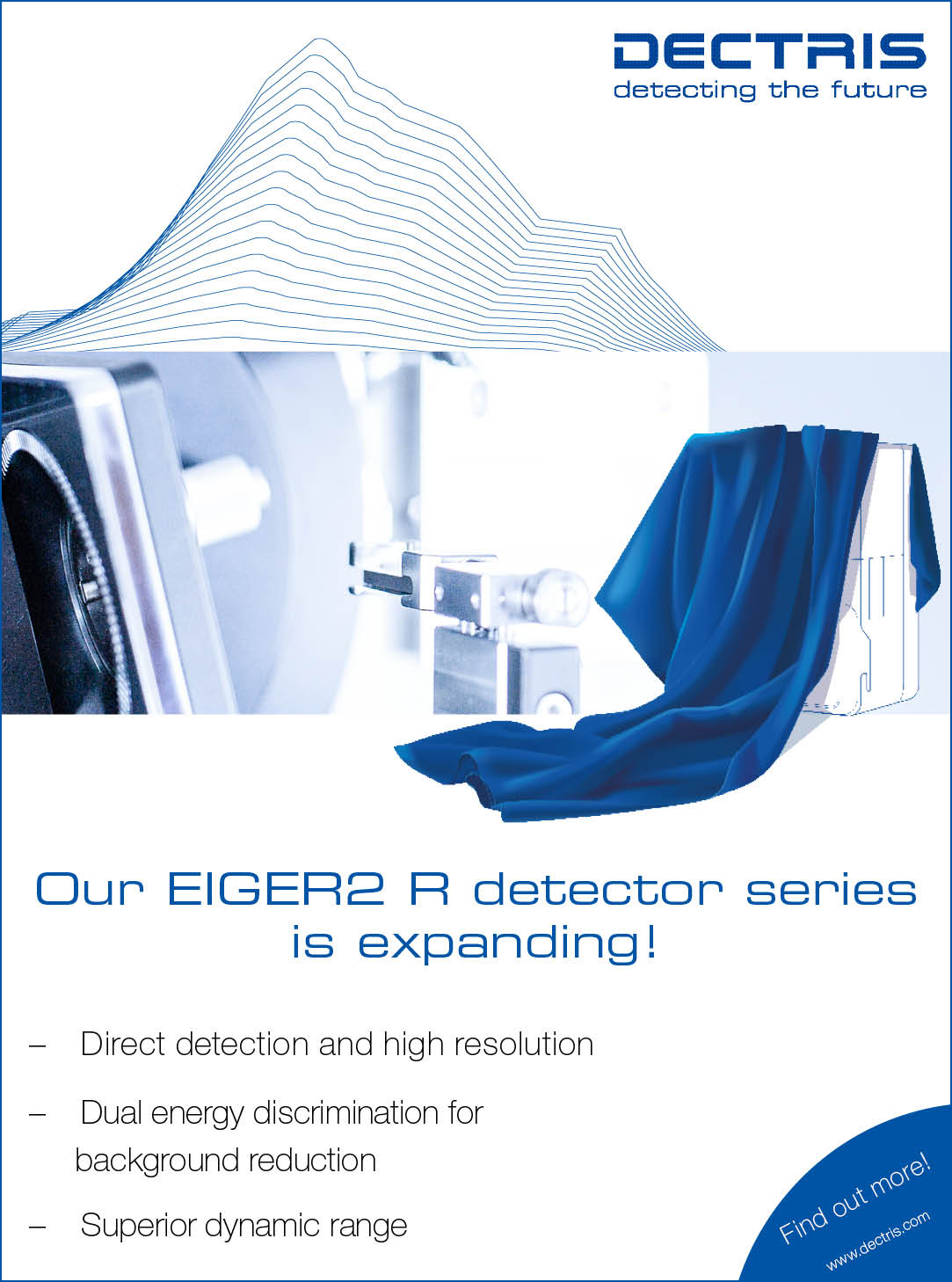


Meeting report (IUCr supported)
3rd LACA School on Small Molecule Crystallography - Virtual Edition
![thumbnail [thumbnail]](https://www.iucr.org/__data/assets/image/0005/151196/thumbnail.jpg)
The Third School of the Latin American Crystallographic Association (LACA) focusing on Small Molecule Crystallography was originally programmed to be held on 23–29 March 2020 in Mexico City, Mexico. Mexico was selected as the venue because its geographic location permitted coverage of Central American countries that were not covered in the first edition of the School (held in 2018 in Montevideo, Uruguay) owing to the steep travel costs. Thanks to the support of our sponsors (UNAM, IUCr, Bruker, Molecular Dimensions/Anatrace, MiTeGen, MBraun and the CCDC), the organization of the School was complete, including lunch menus (the tacos would have been really delicious), but ten days before the beginning of the School, the University issued a directive canceling all reunions, workshops, schools etc. and, shortly after, all presential activities on its campuses. Additionally, the suspension of air travel and the spread of the COVID-19 pandemic in Latin America and the world gave us no other choice than to cancel the School as planned. This was heartbreaking and led to a scramble to cancel hotel reservations, plane tickets and other services; some of these activities have not yet been concluded.
With time, it became apparent that the situation was not improving and that a presential event would not take place soon and certainly not in 2020. Therefore, we decided to hold the School as a virtual event. This decision led to several challenges as the virtual sessions would span over at least four different time zones for the participants. Moreover, the virtual event could not cover the initially planned 60 hours of courses and exercises. Furthermore, the experimental session follow-up would be more difficult without direct access to the participants' computers. Therefore, the School's duration was set for two weeks, with one theoretical lecture (1.5 h) and two practical sessions (1 + 1 h) per day distributed across an eight-hour timeframe. This allowed each lecture to be followed by a practical session the same day and another practical session the next day before a new lecture of a different topic started. The first idea was to have the School in a block of two weeks, but as the second week overlapped with the X Congress of the Mexican Crystallographic Society (SMCr), we decided that the School would flank the week containing the X Congress of the SMCr (2–4 December 2020). Approximately half of the participants initially accepted in the School's March edition preregistered for the virtual edition. Within three days after announcing this virtual edition of the School, we got over 120 applications, far more than we could accept. After a careful selection, 64 participants and 11 instructors from 14 countries (11 countries from Latin America) participated in the School. It is also noteworthy that three instructors, Maria de Jesús Rosales Hoz, Javier Alcidez Ellena and Vojtech Beto Jancik, are Co-editors of Acta Crystallographica Sections C and E, and the others have ample experience in small-molecule crystallography, frequently acting as reviewers for Acta Crystallographica journals. The lectures were hosted on the Zoom platform, and Google Classroom was used for the distribution of class materials. We addressed problem-solving related questions outside of the School's hours through a WhatsApp group created for this purpose, and last-minute announcements were made through this communication platform. Spanish and English were used as primary languages, although questions asked in Portuguese by students from Brazil were also answered. All lectures were recorded and made available to the participants during the same day of recording.
After a brief inauguration, the School started on 23 November 2020 with a fascinating lecture about the “History of X-Ray Diffraction” presented by María de Jesús Rosales Hoz (Cinvestav, IPN, México) and continued with a talk on “Symmetry” given by Leopoldo Suescun (UdelaR, Uruguay) using the symmetry patterns from IUCr Teaching Pamphlet #14. After that, on consecutive days, lessons on the "Physics of Diffraction" were given by Florencia Di Salvo (INQIMAE-UBA, Argentina), Javier Ellena (IFSC-USP, Brazil) and Leopoldo Suescun, while Hamilton Napolitano (UEG, Brazil) lectured on “Direct and Patterson methods”. Finally, the first week ended with a talk on "Data Collection and processing with APEX3" given by Bruce Noll (representing Bruker AXS) and Vojtech Beto Jancik (UNAM, Mexico). The students were given homework for the next week and were encouraged to participate in the X Congress of the SMCr. The week off in between also allowed for a meeting of the organizing committee to assess the School's progress and the teaching methods employed. As a result, the second week's program was amended to operate more efficiently on the lectures' available time.
The second week started on 7 December 2020 with an introduction to SHELX and continued with a lecture on “Basic Structure Solution and Refinement”, followed by “Validation” given by Javier and Beto. After a practical session, Diego Martínez (CCIQS UAEM-UNAM, Mexico) gave lectures on the refinement of disorder. Wednesday and Thursday morning were dedicated solely to the practical training of structure solution, refinement, disorder and validation, teaching the students how to use restraints and constraints for the refinement of disorder. Subsequently, Bruce Noll gave a lecture on Daniel Kratzer’s DSR plugin, and the course before the final exam was centered on “Data Processing and Refinement of different types of twins”. The last lecture of the School was dedicated to the Cambridge Structural Database (CSD) and was given by Suzanna Ward and Ilaria Gimondi from the CCDC, who showed us, among other great features of the database, how to make a Christmas postcard from a polyoxometalate structure. After the last break and a practical session on the CSD conducted by Natalia Alvarez Failache (UdelaR, Uruguay), only the School's closing ceremony remained on the schedule. Among the School participants and lecturers present at the ceremony were Sven Lidin and Hanna Dabkowska, the President and Vice-President of the IUCr, respectively; Graciela Díaz de Delgado, the IUCr Executive Committee representative for Latin America; and José Reyes Gasga, President of LACA. Following the closing remarks, Javier Ellena paid tribute to Graciela Punte for her life's work in teaching crystallography in Latin America. Finally, Leopoldo shared a virtual toast and the School finished with a short game of Kahoot! in a relaxed mood, as can be seen from the screenshot below.
The organizers of the school would like to thank the IUCr, LACA, SMCr, Associação Brasileira de Cristalografia, Asociación Argentina de Cristalografía, Red Uruguaya de Cristalografía and the UNAM for their support during the organization of the School and to UNAM, IUCr, Bruker, Molecular Dimensions/Anatrace, MiTeGen, MBraun and the CCDC for their sponsorship that made the School possible. Furthermore, they would like to thank the patience, interest and good mood of the students who devoted so many hours of their lives in the very difficult times that the region was living through, and for sharing with all their “zoom-mates” (both students and lecturers) the hope that is embedded in learning as an activity for the future.
![[Morefaces]](https://www.iucr.org/__data/assets/image/0006/151197/Morefaces.jpg)
Copyright © - All Rights Reserved - International Union of Crystallography







